听闻今天还要学数据结构,心中堵着一片乌云。

就算受低潮情绪影响也要坚持学下去啊。
目录
5 归并排序
简化下高考一本,二本,专科分数线的划分方式

5.1 栗子
- 划分为两个子序列
- 分别对每个子序列归并排序
- 有序子序列合并
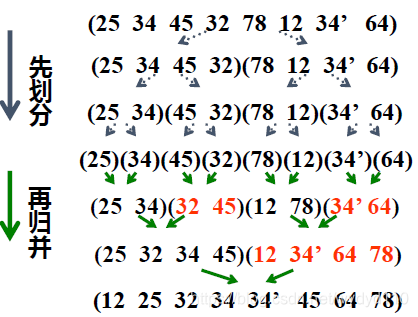
5.2 代码实现
template<class Record>
void MergeSort(Record Array[],Record TempArray[],int left,int right){
//Array为待排序数组,left,right两端
int middle;
if(left < right){//序列中只有0或1个记录,不用排序
middle = (left + right)/2; //平分为两个子序列
//对左边一半进行递归
MergeSort(Array,TempArray,left,middle);
//对右边一半进行递归
MergeSort(Array,TempArray,middle+1,right);
Merge(Array,TempArray,left,right,middle);//归并
}
}归并函数
//两个有序子序列都从左向右扫描,归并到新数组
template<class Record>
void Merge(Record Array[],Record TempArray[],int left,int right,int middle){
int i,j,index1,index2;
//将数组暂存入临时数组
for(j=left;j<=right;j++)
TempArray[j] = Array[j];
index1 = left; //左边子序列的起始位置
index2 = middle + 1; //右边子序列的起始位置
i = left; //从左开始归并
while(index1 <= middle && index2 <= right){
//取较小者插入合并数组中
if(TempArray[index1] <= TempArray[index2])
Array[i++] = TempArray[index1++];
else
Array[i++] = TempArray[index2++];
}
while(index1 <= middle) //只剩左序列,可直接复制
Array[i++] = TempArray[index1++];
while(index2 <= right) //与上个循环互斥,复制右序列
Array[i++] = TempArray[index2++];
}5.3 归并算法优化
- 对基本已排序的序列进行直接插入排序,小序列不递归
- R.Sedgewick优化:拆分方式不变,归并时从两端开始处理,向中间推进,简化边界判断
5.3.1 R.Sedgewick优化
优化前

优化后

还是看不懂?没事,接着解析。先对左边子序列进行归并
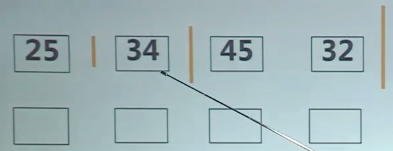
归并时应该为

此时对右边子序列32,45进行倒置
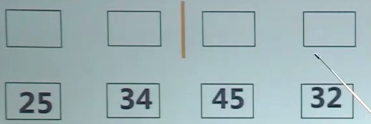
接着
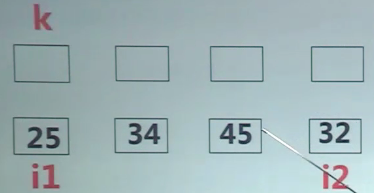
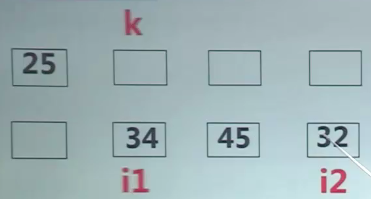
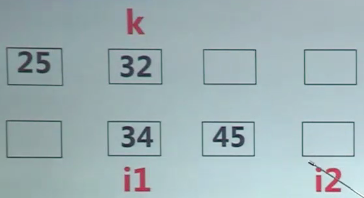


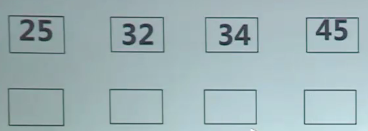
对右边子序列进行归并
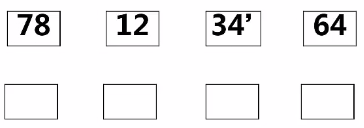
对右边的子序列34',64进行倒置
![]()
........剩下步骤同上,最终为12 34’ 64 78
继续合并

右边子序列进行倒置


.......最终

5.3.2 R.Sedgewick代码实现
template<class Record>
void ModMergeSort(Record Array[],Record TempArray[],int left,int right){
//Array为待排序数组,left,right指向两端
int middle;
if(right-left+1 > THRESHOLD){//长序列递归,threshold阈值,临界点
middle = (left + right)/2;
ModMergeSort(Array,TempArray,left,middle);//左
ModMergeSort(Array,TempArray,middle+1,right);//右
//对相邻的有序序列进行归并
ModMerge(Array,TempArray,left,right,middle);//归并
}
else InsertSort(&Array[left],right-left+1);//小序列插入排序
}优化的归并函数
template<class Record> void ModMerge(
Record Array[],Record TempArray[],int left,int right,int middle){
int index1,index2//两个子序列的起始位置
int i,j,k;
for(i = left; i <= middle; i++)
TempArray[i] = Array[i]; //复制左边的子序列
for(j = 1; j <= right-middle; j++) //颠倒复制右序列
TempArray[right-j+1] = Array[j+middle];
for(index=left,index2=right,k=left; k<=right; k++)
if(TempArray[index1] <= TempArray[index2])
Array[k] = TempArray[index1++];
else
Array[k] = TempArray[index2--];
}
5.4 算法分析

漫画乱入,自娱自乐。
6 分配排序和索引排序
- 不需要进行记录间的两两比较
- 需要事先知道记录序列的一些具体情况,关键码的分布
6.1 桶式排序
- 事先知道序列中的记录都位于某个小区间段[0,m]内
- 将具有相同值的记录都分配到同一个桶中,再依次按照编号从桶中取出记录,组成一个有序序列
6.1.1 栗子

6.1.2 代码实现
template<class Record> void BucketSort(Record Array[],int n,int max){
Record *TempArray = new Record[n]; //临时数组
int *count = new int[max]; //桶容量计数器
int i;
for(i=0; i<n; i++) //把序列复制到临时数组
TempArray[i] = [i];
for(i=0; i<max; i++) //所有计数器初始置为0
count[i] = 0;
for(i=0; i<n; i++) //统计每个取值出现的次数
count[Array[i]]++;
for(i=0; i<max; i++) //统计小于等于i的元素的个数
count[i] = count[i-1] + count[i]; //c[i]记录i+1的起址
for(i=n-1; i>=0; i--) //局部开始,保证稳定性
Array[--count][TempArray[i]] = TempArray[i];
}6.1.3 算法分析

6.2 基数排序
桶式排序只适合m很小的情况。
基数排序:当m很大时,可以将一个记录的值分为多个部分来比较。
还是直接看例子吧,概念神马的先再见。
6.2.1 栗子1

6.2.2 栗子2

6.2.3 LSD(低位优先)-基于顺序存储
原始输入数组 R 的长度为 n,基数为 r,排序码个数为 d

代码实现
template <class Record>
void RadixSort(Record Array[], int n, int d, int r) {
Record *TempArray = new Record[n];
int *count = new int[r];
int i, j, k;
int Radix = 1; // 模进位,用于取Array[j]的第i位
for (i = 1; i <= d; i++) {
// 对第 i 个排序码分配
for (j = 0; j < r; j++)
count[j] = 0; // 初始计数器均为0
for (j = 0; j < n; j++) { // 统计每桶记录数
k = (Array[j] / Radix) % r; // 取第i位
count[k]++; // 相应计数器加1
}
for (j = 1; j < r; j++) // 给桶划分下标界
count[j] = count[j-1] + count[j];
for (j = n-1; j >= 0; j--) { // 从数组尾部收集
k = (Array[j] / Radix ) % r; // 取第 i 位
count[k]--; // 桶剩余量计数器减1
TempArray[count[k]] = Array[j]; // 入桶
}
for (j = 0; j < n; j++) // 内容复制回
Array 中 Array[j] = TempArray[j];
Radix *= r; // 修改模Radix
}
}
算法分析
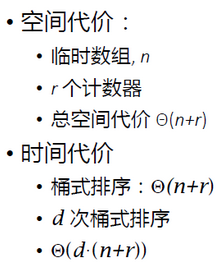
![]()
6.2.4 LSD(低位优先)-基于链式存储
原始输入数组 R 的长度为 n,基数为 r,排序码个数为 d
链式存储避免了空间浪费情况

代码实现(后续补)
算法分析
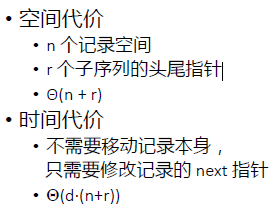
![]()
7 总结


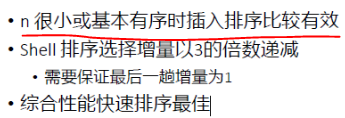
4) 元素的移动次数与关键字的初始排列次序无关:基数排序
元素的移动次数与关键字的初始排列次序有关:直接插入排序,冒泡排序,快速排序
5) 快速排序每一躺结束后都将至少一个元素放在最终位置。

内排序暂时告一段落了,然而仙气已经耗竭。
学习自:
张铭《数据结构》
程杰《大话数据结构》
陈越,何钦铭《数据结构》
附加:排序算法的舞蹈
冒泡排序:http://t.cn/hrf58M
希尔排序:http://t.cn/hrosvb,
选择排序:http://t.cn/hros6e
插入排序:http://t.cn/hros0W
快速排序:http://t.cn/ScTA1d
归并排序:http://t.cn/Sc1cGZ


























 741
741











 被折叠的 条评论
为什么被折叠?
被折叠的 条评论
为什么被折叠?








